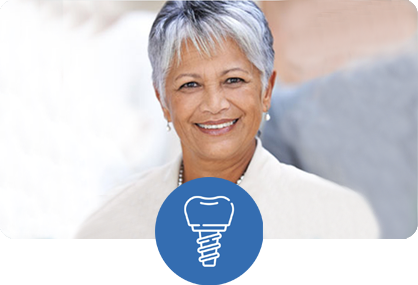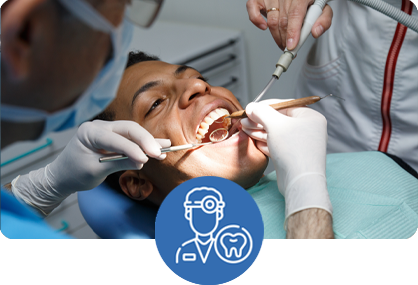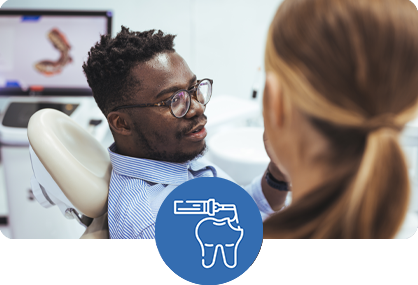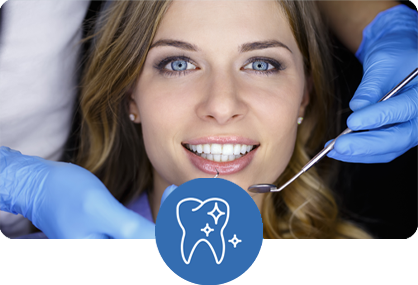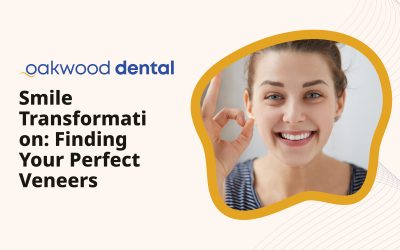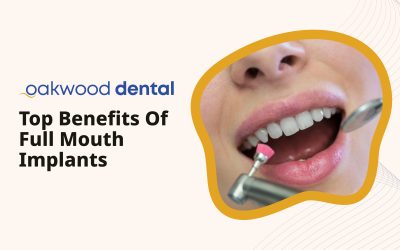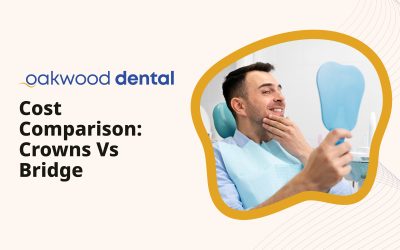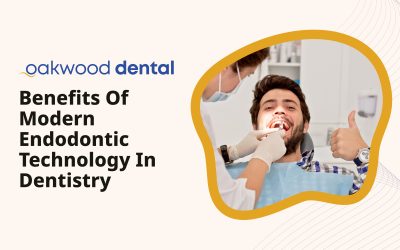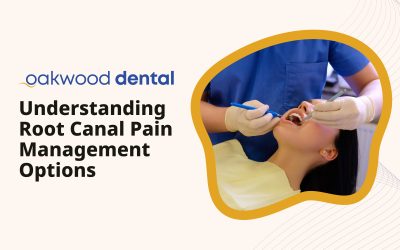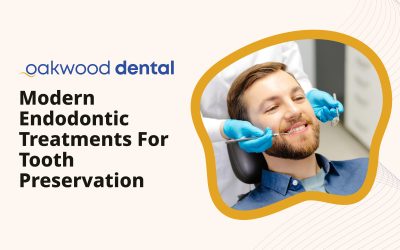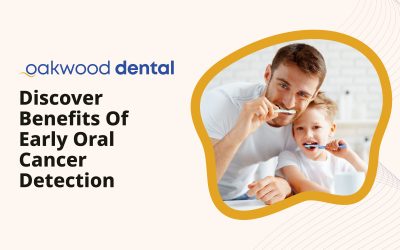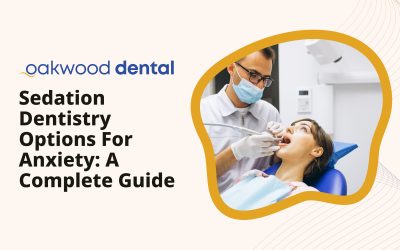Essential Dental Technologies Transforming Patient Care
- CEREC technology enables same-day dental restorations with precise customization
- Digital imaging and 3D scanning provide enhanced diagnostic capabilities
- Laser dentistry offers minimally invasive treatment options
- Computer-guided implant systems achieve submillimeter placement accuracy
- Digital Smile Design technology allows for precise treatment visualization
- Modern teeth whitening technologies provide efficient cosmetic solutions
Key Takeaways
| Technology | Primary Benefits | Patient Impact |
| Digital Imaging & 3D Scanning | 90% reduced radiation, enhanced diagnostic accuracy | Safer, more comfortable experience with improved outcomes |
| CAD/CAM & CEREC | Single-visit restorations, precision fit | Eliminates multiple appointments and temporary restorations |
| Laser Dentistry | Minimally invasive, reduced bleeding | Less discomfort, faster healing, reduced anxiety |
| Digital Smile Design | Precise treatment visualization, better communication | Increased treatment satisfaction through involvement in design |
Introduction to Modern Dental Technologies
At Oakwood Dental Clinics, we know that advanced dental technologies are super important for good patient care. The dental world has changed a lot in recent years. New technologies have changed everything from how we diagnose problems to how we treat them. These changes have made dental care more precise, less painful, and more comfortable than ever before.
Modern dental technologies make treatments work better and make the whole experience nicer for patients by reducing pain, making treatments shorter, and improving results. These technologies help dentists make more accurate diagnoses, create personalized treatment plans, and do procedures with amazing precision. Digital tools have streamlined treatments, cutting down on the number of appointments needed and reducing mistakes in complex procedures.
In this guide, we’ll explore the top dental technologies that are making patient care better. From digital imaging to same-day restorations, these innovations are changing dentistry and setting new standards for patient care. We’ll look at how these technologies work together to create a complete system of care that addresses all parts of oral health, from prevention to complex restorations, making sure patients get the most advanced care available in modern dentistry.
Digital Imaging and 3D Scanning Technology
Digital imaging and 3D scanning have completely changed how dental professionals diagnose and plan treatments. These technologies give detailed, high-resolution images of the mouth, allowing for more accurate diagnoses and treatment planning. The switch from traditional film X-rays to digital systems is one of the biggest changes in dental diagnostic abilities in the last few decades.
Benefits of Digital Imaging
Digital imaging has revolutionized diagnostic dentistry by providing unprecedented clarity and safety. This technology represents a fundamental shift in how dental professionals assess oral health conditions, enabling earlier detection and more precise treatment planning than ever before.
Key advantages of digital imaging include:
- Reduced radiation exposure: Up to 90% less than traditional X-rays, making the process much safer for patients, especially those who need frequent imaging for monitoring chronic conditions or orthodontic treatment progress.
- Immediate image availability: No chemical processing required, eliminating environmental impact of developing chemicals and reducing wait times from minutes to seconds, allowing for same-visit diagnosis and treatment planning.
- Enhanced image quality: Ability to zoom, adjust contrast, and enhance images, allowing dentists to identify subtle issues that might be missed on regular X-rays, such as hairline fractures or early signs of decay.
- Efficient storage and retrieval: Easy access to patient records, making it simpler to track oral health changes over time and share imaging with specialists for collaborative treatment planning.
- Improved patient education: Visual representation of oral conditions helps patients understand their treatment needs and options, leading to better informed decisions and increased treatment acceptance.
- Advanced analytical tools: Software can highlight specific structures or conditions, improving diagnostic accuracy through automated detection of potential problems and measurement tools for precise treatment planning.
At Oakwood Dental Clinics, we use advanced digital imaging technologies to ensure accurate diagnoses and effective treatment planning. This technology helps us detect issues that might not be visible during a standard examination, ensuring complete care for our patients. The ability to enhance, magnify, and adjust contrast in digital images gives our dentists amazing diagnostic capabilities that translate directly into better patient outcomes.
Cone Beam Computed Tomography (CBCT)
CBCT scanning represents the pinnacle of dental imaging technology, providing three-dimensional views of the teeth, soft tissues, nerve pathways, and bone in a single scan. This advanced imaging modality has become indispensable for complex dental procedures, offering visualization capabilities that were impossible just a decade ago.
CBCT technology is particularly valuable for:
- Implant planning and placement: Allows for precise assessment of bone volume, density, and anatomical structures, including proximity to nerves and sinuses. This detailed visualization enables dentists to select optimal implant sizes and positions before surgery begins.
- Evaluating jaw disorders and TMJ issues: Provides detailed visualization of the temporomandibular joint structures, including the condyle, disc, and surrounding bone, helping diagnose complex joint problems that can’t be seen with conventional imaging.
- Planning orthodontic treatment: Especially valuable for cases involving impacted teeth or complex jaw relationships, revealing the exact position of unerupted teeth and their relationship to roots of adjacent teeth.
- Assessing complex root canal anatomy: Helps dentists visualize canal configurations that might be missed in 2D imaging, including additional canals, unusual curvatures, and calcifications that could complicate treatment.
- Diagnosing dental trauma: Reveals fractures and displacements that might not be apparent in conventional X-rays, including subtle root fractures and alveolar bone damage.
- Pre-surgical planning for extractions: Particularly for impacted wisdom teeth near important structures like the inferior alveolar nerve, allowing surgeons to plan the safest approach and warn patients of potential risks.
The high-resolution 3D imaging provided by CBCT enables microscopic treatment planning precision, particularly for complex procedures like full mouth reconstructions and dental implant placements. With super accurate imaging, CBCT allows our dentists to see anatomical structures in amazing detail, reducing surgical risks and optimizing treatment outcomes through careful planning that accounts for every variable.
CAD/CAM Technology and Same-Day Restorations
Computer-Aided Design and Computer-Aided Manufacturing (CAD/CAM) technology has transformed restorative dentistry by enabling the creation of dental restorations in a single appointment. This revolutionary technology eliminates the need for traditional impressions, temporary restorations, and multiple visits that have been standard in dentistry for decades. The digital workflow makes the restoration process smoother, reducing potential errors while delivering exceptional precision and fit.
CEREC Technology: Transforming Restorative Dentistry
CEREC (Chairside Economical Restoration of Esthetic Ceramics) is a revolutionary CAD/CAM system that allows dentists to design, manufacture, and place ceramic restorations in a single visit. This technology has fundamentally changed the restorative dentistry landscape, providing benefits that extend far beyond simple convenience.
CEREC technology offers numerous advantages:
- Complete restorations in one visit: Instead of multiple appointments spread over weeks, patients receive their permanent restoration the same day, saving valuable time and eliminating the hassle and discomfort of temporary restorations.
- No uncomfortable traditional impressions: Digital scanning eliminates putty materials that can trigger gagging in sensitive patients, making the experience comfortable even for those with strong gag reflexes or dental anxiety.
- Superior customization and precise fit: Digital design capabilities allow for microscopic adjustments to ensure optimal contact points, proper bite relationships, and ideal contours that match your natural teeth perfectly.
- High-quality ceramic materials: CEREC restorations use advanced ceramic blocks that closely mimic the translucency, strength, and appearance of natural tooth enamel, providing both aesthetic appeal and long-term durability.
- Preservation of natural tooth structure: Conservative preparation techniques enabled by precise digital planning mean more of your healthy tooth remains intact, which is better for long-term tooth health.
- Long-lasting, durable restorations: Success rates comparable to or better than traditionally manufactured restorations, with many CEREC crowns lasting 10-15 years or more with proper care.
- Reduced contamination risk: Single-visit treatment eliminates the risk of bacterial contamination and restoration failure that can occur between appointments when using temporary restorations.
The CEREC process involves three seamlessly integrated steps:
- Digital Impression: A specialized intraoral camera captures a precise 3D image of the prepared tooth in just minutes. This optical impression eliminates the discomfort of traditional impression materials while capturing thousands of images per second to create a highly accurate digital model of your tooth and surrounding structures.
- Computer-Aided Design: Using sophisticated software, the dentist designs the restoration to exact specifications, with precise control over every aspect including thickness, shape, contact points with adjacent teeth, and bite relationships with opposing teeth. The software can even reference your other teeth to create a restoration that matches your natural anatomy.
- In-Office Fabrication: An in-office milling unit carves the restoration from a solid ceramic block in approximately 10-20 minutes. The milled restoration is then polished to a natural luster and bonded to your tooth using advanced adhesive techniques. Modern ceramic materials provide both exceptional aesthetics and long-term durability.
At Oakwood Dental Clinics, we’re proud to offer CEREC same-day restorations that combine efficiency with exceptional quality, allowing patients to restore their smiles in a single appointment. Our investment in this advanced technology demonstrates our commitment to providing convenient, high-quality care that respects our patients’ time while delivering outstanding clinical results that stand the test of time.
Laser Dentistry Applications
Laser technology has introduced a more precise and less invasive approach to various dental procedures, representing one of the most significant advances in treatment methodology in recent decades. By using focused light energy, dental lasers can perform many procedures with less discomfort, bleeding, and recovery time compared to traditional methods. The precision of laser energy allows dentists to target tissues very accurately, minimizing damage to surrounding healthy structures.
Types of Dental Lasers and Their Applications
Different types of dental lasers have been developed for specific clinical applications, each optimized for particular tissue types and procedures. Understanding these differences helps appreciate the versatility and precision that laser dentistry offers modern dental practice.
- Soft Tissue Lasers: Used for gum reshaping, treating periodontal disease, removing oral lesions, and performing frenectomies. These lasers are designed to be absorbed by hemoglobin and water in soft tissues, allowing them to precisely shape gum tissues for cosmetic procedures and effectively treat periodontal pockets by eliminating bacteria and diseased tissue.
- Hard Tissue Lasers: Used for cavity preparation, removing decay, and preparing teeth for restorations. Erbium lasers can precisely ablate tooth structure while causing minimal thermal damage to surrounding tissues and the dental pulp. This precision allows for more conservative preparations that preserve healthy tooth structure.
- Combination Lasers: Versatile laser systems that can be adjusted to work on both soft and hard tissues. These advanced systems offer variable settings to address various clinical situations, giving dental practices flexible treatment options in a single device, reducing equipment costs while expanding treatment capabilities.
Benefits of Laser Dentistry
Laser dentistry has transformed the patient experience by making many procedures more comfortable and less intimidating. The technology offers advantages that benefit both patients and dental professionals, making previously uncomfortable procedures much more tolerable.
Key benefits include:
- Minimally invasive procedures: Less trauma to surrounding tissues results in more conservative treatments that preserve healthy structures, leading to faster healing and better long-term outcomes.
- Reduced need for anesthesia: Many laser procedures can be performed with little or no anesthesia, making treatment more comfortable for patients with dental anxiety or those who prefer to avoid injections.
- Minimal bleeding and swelling: The laser’s ability to seal blood vessels as it cuts reduces bleeding during procedures and minimizes post-operative swelling, improving patient comfort during and after treatment.
- Faster healing and recovery: Reduced tissue trauma means patients experience shorter recovery periods and can return to normal activities more quickly than with traditional surgical methods.
- Reduced infection risk: The sterilizing effect of lasers kills bacteria during the procedure, lowering the risk of post-operative infection and potentially eliminating the need for prophylactic antibiotics in some cases.
- Enhanced precision: Lasers allow for incredibly accurate tissue removal and shaping, especially valuable in cosmetic procedures where exact tissue contouring is essential for optimal aesthetic results.
- Less noise and vibration: The absence of the high-pitched drill sound and vibration significantly reduces dental anxiety for patients who are frightened by traditional dental equipment.
- Decreased post-operative discomfort: Patients often experience less pain after laser procedures, frequently eliminating the need for pain medication and allowing them to resume normal activities immediately.
At Oakwood Dental Clinics, we use laser technology in various treatments to provide more comfortable and efficient care for our patients. This technology is especially helpful for patients with dental anxiety, as it often eliminates the need for drills and reduces discomfort during procedures. Our dentists have received specialized training in laser dentistry techniques to maximize the benefits of this advanced technology while ensuring patient safety and optimal clinical outcomes.
Advanced Implant Technologies
Dental implant technology has advanced significantly, making implant procedures more predictable, less invasive, and more successful than ever before. These innovations have transformed dental implant treatments, giving patients better outcomes and improved experiences. Modern implant dentistry combines digital planning, precision surgical techniques, and advanced materials to create tooth replacements that closely mimic natural teeth in both form and function.
Computer-Guided Implant Surgery
Computer-guided implant surgery represents a quantum leap in surgical precision and safety. This technology combines 3D imaging, sophisticated treatment planning software, and precision-manufactured surgical guides to achieve optimal implant placement with unprecedented accuracy. The integration of these digital tools has transformed implant dentistry from an art relying heavily on surgical experience to a science with predictable, reproducible outcomes.
This advanced approach offers several significant advantages:
- Submillimeter placement accuracy: Ensures ideal positioning with optimal relationships to adjacent teeth and critical anatomical structures like nerves, sinuses, and blood vessels, reducing the risk of complications and improving long-term success.
- Minimally invasive flapless procedures: Many cases can be completed with smaller incisions or even flapless surgery that preserves soft tissue architecture, reducing post-operative discomfort and accelerating healing.
- Reduced surgery time and patient discomfort: Pre-planned procedures with surgical guides can be completed significantly faster than conventional freehand implant placement, with many procedures taking 30-50% less time.
- Improved outcome predictability: Comprehensive pre-surgical planning addresses potential challenges before surgery begins, allowing for contingency planning and reducing the likelihood of unexpected complications.
- Optimal integration with existing dentition: Precise three-dimensional positioning ensures that the final restoration will have proper emergence profile, contact points, and occlusion, resulting in restorations that look and function like natural teeth.
- Enhanced interdisciplinary communication: Shared digital planning platforms allow restorative dentists, surgeons, and laboratory technicians to collaborate effectively, ensuring that surgical placement supports the planned restoration.
- Reduced complication risk: Pre-surgical identification of anatomical limitations and precise surgical execution minimize risks such as nerve damage, sinus perforation, or improper implant angulation that could compromise the restoration.
Surface Technology and Biomaterials
Modern dental implants incorporate advanced surface technologies and innovative biomaterials that promote faster and more reliable integration with the jawbone. These materials science innovations have significantly improved success rates and reduced healing times compared to early implant designs.
Key innovations include:
- Textured surfaces: Microscopic surface modifications increase the surface area available for bone attachment, enhancing the mechanical and biological connection between implant and bone for superior stability.
- Bioactive coatings: Special coatings that actively stimulate bone growth and accelerate osseointegration, incorporating materials like hydroxyapatite or calcium phosphate that promote bone cell activity and attachment.
- Antimicrobial surfaces: Advanced coatings that prevent bacterial colonization during the critical healing period, reducing the risk of peri-implantitis and improving long-term implant survival rates.
- Zirconia implants: Metal-free ceramic implants offering excellent aesthetics and biocompatibility for patients with metal sensitivities or those preferring non-metallic options, particularly valuable in the aesthetic zone.
- Optimized implant designs: Tapered configurations and specialized thread patterns that better distribute occlusal forces and improve initial stability, even in compromised bone situations.
- Platform-switching designs: Specialized implant-abutment connections that preserve crestal bone levels and support long-term soft tissue health around the implant, contributing to better aesthetic outcomes.
At Oakwood Dental Clinics, we use the latest dental implant technologies to provide our patients with safe, effective, and long-lasting tooth replacement solutions. Our comprehensive approach to implant dentistry ensures optimal functional and aesthetic outcomes. By combining advanced diagnostic imaging, precise surgical planning, state-of-the-art implant systems, and meticulous restorative techniques, we can successfully manage even the most challenging cases with predictable, satisfying results.
Digital Smile Design and Treatment Planning
Digital Smile Design (DSD) is a comprehensive treatment planning approach that combines cutting-edge digital technology with aesthetic principles to create personalized smile transformations. This innovative methodology allows for precise outcome visualization and collaborative planning before any treatment begins, ensuring that patients and dentists share the same vision. DSD represents a paradigm shift from traditional treatment planning by placing the patient’s facial appearance and personal preferences at the center of the design process.
The Digital Smile Design Process
The DSD process is systematic and patient-centered, involving several carefully orchestrated steps that ensure every aspect of the smile transformation is planned with precision. This methodical approach eliminates guesswork and creates a clear roadmap for achieving optimal results.
- Comprehensive Documentation: Collection of high-resolution digital photographs, HD videos, and 3D scans of the patient’s face and smile. This documentation captures both static and dynamic aspects of the patient’s appearance, including facial expressions, lip movement during speech and smiling, and the relationship between teeth and facial features.
- Digital Analysis: Sophisticated analysis of facial proportions, smile dynamics, and dental aesthetics using specialized DSD software. This analysis considers multiple reference lines, facial symmetry, gum display during smiling, tooth proportions, and the relationship between dental and facial midlines, creating a mathematical foundation for the aesthetic design.
- Virtual Smile Design: Creation of a detailed digital mockup showing the proposed treatment outcome with photorealistic rendering. This visual representation allows for precise planning of tooth dimensions, shapes, positions, color, and texture, all harmonized with the patient’s unique facial features and personal preferences.
- Patient Presentation: Interactive presentation of the virtual design to the patient for feedback and approval. This collaborative process allows patients to visualize potential outcomes from multiple angles and participate actively in refining the design until it perfectly matches their expectations.
- Treatment Planning: Development of a detailed, step-by-step treatment plan based on the approved design. This may involve coordination between multiple specialties—orthodontics, periodontics, prosthodontics, and oral surgery—all working toward the unified goal of achieving the planned outcome.
- Implementation: Precise execution of the treatment plan with procedures guided by the digital design. Digital workflows ensure that the final clinical result accurately matches the approved virtual design, with custom surgical guides, provisional restorations, and final prosthetics all fabricated from the digital plan.
Benefits of Digital Smile Design
Digital Smile Design has revolutionized aesthetic dentistry by bridging the communication gap between patients and dental professionals. This technology transforms abstract concepts into tangible visualizations, ensuring everyone involved in the treatment process shares the same goals.
Key advantages include:
- Enhanced communication: Visual representation of treatment goals eliminates misunderstandings and ensures patient and dental team alignment, reducing the risk of disappointment and revision procedures.
- Predictable aesthetic outcomes: The final result closely matches patient expectations because it was planned in meticulous detail before treatment began, with opportunities for modifications during the digital phase when changes are simple and cost-free.
- Comprehensive treatment planning: Addresses all aspects of smile aesthetics including tooth position, size, shape, color, gum architecture, bite relationships, and facial harmony, ensuring balanced, natural-looking results.
- Improved interdisciplinary coordination: Multiple specialists can work from the same digital blueprint, ensuring seamless integration of orthodontic, surgical, and restorative procedures toward a unified aesthetic goal.
- More efficient treatment execution: Reduced chair time and fewer revisions because many critical decisions are made during the planning phase rather than chairside during actual treatment appointments.
- Higher patient satisfaction: Active involvement in the design process gives patients ownership of their treatment outcome, and the ability to preview results before committing increases confidence and satisfaction.
- Virtual treatment exploration: Ability to test different treatment options digitally before committing to irreversible procedures, allowing patients to compare conservative versus comprehensive approaches and make informed decisions.
At Oakwood Dental Clinics, we use Digital Smile Design technology to create personalized treatment plans that address each patient’s unique needs and aesthetic goals. This technology allows us to provide truly customized care that transforms smiles with precision and artistry. Our patients consistently express appreciation for being able to preview and participate in designing their new smile before treatment begins, ensuring that the final result not only meets but exceeds their expectations.
Intraoral Scanners and Digital Impressions
Intraoral scanners have revolutionized the process of taking dental impressions, eliminating the need for traditional impression materials that many patients find uncomfortable or even intolerable. These sophisticated scanners use optical technology to create highly accurate digital models of the teeth and surrounding tissues in minutes. The transition to digital impressions represents a significant improvement in patient comfort while simultaneously enhancing accuracy and workflow efficiency throughout the entire treatment process.
How Intraoral Scanning Works
The intraoral scanning process is straightforward, comfortable, and remarkably fast, representing a dramatic improvement over traditional impression techniques that have remained largely unchanged for decades. Understanding how this technology works helps patients appreciate the precision and convenience it provides.
- Digital Capture: A small, ergonomic handheld scanner is moved systematically around the mouth, capturing thousands of high-resolution images per second. These scanners use various optical technologies—including laser, structured light, or confocal microscopy—to capture precise three-dimensional data with submillimeter accuracy.
- Real-Time Processing: Sophisticated software instantly stitches these images together to create a precise 3D digital model. Advanced algorithms process the data in real-time, allowing the dentist to immediately see the developing model on a chairside monitor and identify any areas that need rescanning before the patient leaves the chair.
- Digital Workflow Integration: The completed digital model can be immediately viewed, analyzed, rotated in three dimensions, and used for treatment planning or fabrication of dental restorations. These models can be measured with extreme precision, manipulated for various analyses, and shared instantly with dental laboratories or specialists anywhere in the world.
Advantages of Digital Impressions
Digital impressions offer transformative benefits compared to traditional impression methods, improving both the patient experience and the quality of the final restoration. These advantages have made digital impressions the new standard of care in progressive dental practices.
Key benefits include:
- Superior patient comfort: Eliminates gagging, unpleasant tastes, and the sensation of choking that many patients experience with traditional impression materials, making the experience dramatically more pleasant, especially for patients with strong gag reflexes or dental anxiety.
- Enhanced accuracy: Digital impressions avoid distortion issues that can occur with traditional materials due to setting reactions, temperature changes, or removal forces, resulting in better-fitting restorations that require fewer adjustments.
- Immediate quality verification: The dentist can instantly review the impression on-screen and rescan specific areas if needed without repeating the entire process, ensuring optimal impression quality before the patient leaves.
- Efficient digital storage: Models are stored in the cloud or on secure servers, eliminating the need for physical storage space and ensuring that patient records can never be lost or damaged, with instant accessibility from any location.
- Seamless sharing capabilities: Digital files can be transmitted instantly to dental laboratories and specialists, eliminating shipping delays and potential damage during transport, accelerating the treatment timeline.
- Environmental sustainability: Eliminates physical impression materials and packaging waste, reducing the environmental footprint of dental procedures and eliminating exposure to potentially allergenic impression materials.
- Integration with digital workflows: Seamless connection with CAD/CAM systems, 3D printers, and treatment planning software creates a fully digital workflow that improves efficiency and accuracy throughout the treatment process.
- Time efficiency: Digital impressions typically require less time than conventional methods, with most full-arch scans completed in 3-5 minutes compared to 10-15 minutes for traditional impressions including setting time.
At Oakwood Dental Clinics, we use advanced intraoral scanning technology to create precise digital impressions for various treatments, including orthodontic treatments, restorations, and implant procedures. This technology enhances both the accuracy of our treatments and the comfort of our patients. The elimination of messy impression materials and the ability to immediately verify impression quality has transformed our clinical workflow while significantly improving the patient experience, particularly for those who previously struggled with traditional impression techniques.
3D Printing in Dentistry
3D printing technology has transformed numerous aspects of dental practice, enabling the on-demand production of various dental appliances, models, surgical guides, and even custom prosthetics. This additive manufacturing technology offers unprecedented customization capabilities and production efficiency that were unimaginable just a few years ago. The ability to create complex shapes with high precision has opened new possibilities in treatment planning, patient education, and the delivery of custom dental solutions.
Applications of 3D Printing in Dentistry
The versatility of 3D printing has made it valuable across virtually every specialty within dentistry. This technology continues to find new applications as materials science advances and printers become more sophisticated and affordable.
Current applications include:
- Surgical guides for implant placement: Custom-fabricated guides ensure precise transfer of digital treatment plans to the clinical environment, improving accuracy and reducing surgery time while enhancing safety.
- Diagnostic and treatment planning models: Physical models allow dentists and patients to visualize conditions and proposed treatments in three dimensions, improving understanding and treatment acceptance while facilitating interdisciplinary communication.
- Orthodontic aligners and retainers: Direct printing of clear aligners enables cost-effective fabrication of custom appliances with complex movements programmed into each aligner in the series.
- Temporary crowns and bridges: Same-day fabrication of high-quality provisional restorations that protect prepared teeth while permanent restorations are being manufactured, with superior fit and aesthetics compared to traditional temporaries.
- Custom impression trays: Patient-specific trays designed from digital scans ensure optimal impression material placement and retention, improving final impression quality.
- Educational and communication models: Enlarged or sectioned models help patients visualize conditions and treatment options, improving informed consent and reducing anxiety about unfamiliar procedures.
- Occlusal splints and night guards: Custom-fit appliances printed with precise occlusal relationships and proper thickness for managing bruxism and TMJ disorders.
- Removable partial denture frameworks: Digitally designed and printed frameworks with complex undercuts and precise fit that would be difficult or expensive to create using conventional casting techniques.
Benefits of 3D Printing in Dental Care
The integration of 3D printing into dental practice offers numerous advantages that benefit both patients and dental professionals, streamlining workflows and improving outcomes across multiple treatment modalities.
Key advantages include:
- Enhanced precision and customization: Ability to produce patient-specific solutions with complex geometries and precise dimensions that would be difficult or impossible to achieve through traditional manufacturing methods.
- Rapid production times: Many applications can be completed in hours rather than days or weeks, with some surgical guides and models printed overnight for next-day procedures.
- On-demand manufacturing capability: Eliminates the need for large physical inventory and allows immediate replacement of lost or damaged appliances from stored digital files, improving convenience for patients and practice efficiency.
- Cost-effective complex fabrication: 3D printing makes economically feasible the production of intricate designs that would be prohibitively expensive using conventional techniques, democratizing access to advanced treatments.
- Improved treatment outcomes: Precise implementation of digital designs ensures that clinical execution matches treatment planning, reducing errors and improving predictability.
- Reduced inventory requirements: Digital storage of designs eliminates the need for physical inventory space, as items can be printed as needed from digital libraries.
- Material versatility: Wide range of biocompatible materials available for different applications, from rigid surgical guides to flexible night guards, each optimized for its specific purpose.
- Continuous innovation: Rapid evolution of materials and printing technologies continually expands the range of possible applications and improves quality and speed of production.
At Oakwood Dental Clinics, we leverage 3D printing technology to create precise surgical guides, diagnostic models, and custom appliances that enhance the efficiency and accuracy of our treatments. This technology allows us to provide truly customized solutions for each patient’s unique needs while reducing treatment time and improving outcomes. The combination of 3D printing with our comprehensive digital workflow enables us to deliver complex treatments with greater predictability and precision than ever before, while often reducing costs compared to traditional laboratory fabrication methods.
Advanced Teeth Whitening Technologies
Modern teeth whitening technologies have evolved significantly, offering more efficient, comfortable, and effective solutions for enhancing smile aesthetics. These advancements have made professional teeth whitening treatments more accessible and successful than ever before, with dramatically reduced sensitivity and more predictable results. Today’s whitening systems combine advanced chemistry with innovative delivery methods to achieve dramatic shade improvements while maximizing patient comfort and minimizing potential side effects.
In-Office Whitening Systems
Professional in-office whitening systems utilize cutting-edge technologies to achieve significant shade improvement in a single appointment, often lightening teeth by 6-10 shades in just 60-90 minutes. These advanced systems represent the pinnacle of whitening technology, combining chemistry, physics, and dentistry to deliver remarkable results safely and efficiently.
Advanced features include:
- High-intensity light activation systems: LED, plasma arc, and laser technologies that accelerate the whitening process by activating peroxide compounds, breaking down stain molecules more rapidly than chemical action alone and reducing treatment time significantly.
- Optimized whitening agents: Enhanced formulations featuring buffered hydrogen peroxide systems that maintain optimal pH levels throughout treatment, maximizing effectiveness while minimizing enamel sensitivity and soft tissue irritation.
- Integrated desensitizing technologies: Built-in desensitizing agents like potassium nitrate and fluoride that minimize tooth sensitivity during and after treatment, making the procedure comfortable even for patients with naturally sensitive teeth.
- Customized application methods: Precise techniques including gingival barriers and protective coatings that ensure the whitening gel remains only on tooth surfaces, protecting soft tissues from irritation while optimizing contact with enamel.
- Objective shade analysis: Digital shade-matching systems that provide precise, objective measurement of whitening results, removing subjective interpretation and allowing for accurate before-and-after documentation.
- Combination activation approaches: Hybrid systems that use multiple activation methods—chemical, light, and heat—simultaneously to achieve optimal results for different types of discoloration, from extrinsic surface stains to deeper intrinsic discoloration.
Take-Home Whitening Innovations
Take-home whitening systems have also benefited from significant technological advancements, offering professional-quality results with the convenience of at-home treatment. Modern take-home systems bridge the gap between over-the-counter products and in-office treatments, providing effective whitening under professional supervision.
Innovations include:
- Digitally-designed custom trays: Trays created from intraoral scans for improved fit and effectiveness, ensuring even gel distribution, preventing leakage, and maximizing contact between whitening agent and tooth surfaces.
- Advanced gel formulations: New-generation whitening gels with enhanced stability, longer shelf life, and improved viscosity that adheres to tooth surfaces better, reducing waste and improving results.
- LED acceleration devices: Portable light-activation devices that can be used at home to enhance whitening gel effectiveness, reducing treatment time while improving outcomes.
- Smart monitoring systems: Digital tracking applications that record usage patterns, remind patients of treatment schedules, and allow dentists to monitor progress remotely, improving compliance and results.
- Gradient concentration approaches: Systems that use different gel strengths for various areas of the teeth or different treatment phases, allowing customization based on individual discoloration patterns and sensitivity levels.
- Remineralizing combination products: Dual-action formulations that incorporate calcium and phosphate compounds to strengthen enamel while whitening, actually improving tooth health during the aesthetic enhancement process.
At Oakwood Dental Clinics, we offer multiple modern whitening methods to meet each patient’s unique needs and preferences. Our comprehensive approach includes both in-office treatments for immediate dramatic results and customized take-home options for gradual whitening or ongoing maintenance, ensuring lasting smile enhancement. We carefully assess each patient’s dental condition, existing restorations, sensitivity level, and whitening goals to recommend the most appropriate technology and protocol for their specific situation, ensuring optimal results with minimal discomfort.
Teledentistry and Remote Monitoring
Teledentistry has emerged as a valuable technology for extending dental care beyond the physical dental office, particularly accelerated by recent global health events that highlighted the need for remote healthcare capabilities. This innovation allows for remote consultations, monitoring, treatment planning, and even certain diagnostic procedures, improving access to dental care while enhancing practice efficiency. The integration of secure video conferencing platforms, digital imaging sharing capabilities, and sophisticated patient management systems has created new possibilities for delivering dental services across distances.
Applications of Teledentistry
Teledentistry serves multiple functions in modern dental practice, expanding access to care and improving convenience for patients while optimizing practice workflow and resources.
Common applications include:
- Virtual consultations: Initial assessments and treatment planning conducted via secure video conferencing, allowing patients to discuss concerns and receive preliminary recommendations without traveling to the office.
- Remote orthodontic monitoring: Progress tracking for clear aligner and traditional braces treatment using smartphone photos or specialized scanning devices, reducing the number of in-person adjustment appointments required.
- Post-operative follow-ups: Virtual check-ins after surgical procedures to assess healing, address concerns, and determine if in-person evaluation is necessary, saving patients unnecessary trips.
- Specialist consultations: Remote access to specialists for second opinions or collaborative treatment planning without requiring patient travel, particularly valuable for complex cases requiring multidisciplinary input.
- Oral health education: Delivery of personalized preventive care guidance, hygiene instructions, and nutritional counseling via video sessions or educational content sharing.
- Dental emergency triage: Rapid assessment of urgent situations to determine if immediate in-person care is needed or if the problem can be managed with home care instructions and delayed treatment.
- Chronic condition management: Ongoing monitoring of conditions like periodontal disease, temporomandibular disorders, or oral lesions between in-person appointments to ensure treatment effectiveness.
Benefits of Teledentistry
Teledentistry offers numerous advantages that benefit patients, dental professionals, and the healthcare system as a whole, making dental care more accessible, convenient, and efficient.
Key benefits include:
- Improved access to care: Particularly valuable for patients in remote areas, those with mobility limitations, immunocompromised individuals, or busy professionals who struggle to schedule in-office appointments during business hours.
- Reduced travel burden: Eliminates travel time and associated costs for patients, particularly beneficial for routine follow-ups or consultations that don’t require hands-on examination or treatment.
- More efficient clinical time utilization: Allows dental professionals to conduct consultations during schedule gaps or from remote locations, optimizing practice productivity and work-life balance.
- Enhanced continuity of care: Regular virtual check-ins maintain the patient-dentist relationship and allow for early intervention if problems develop between scheduled appointments.
- Reduced dental anxiety: Initial consultations from the comfort of home can help anxious patients become comfortable with their dental team before coming to the office for treatment.
- Improved emergency management: Rapid assessment helps determine true emergencies requiring immediate care versus situations that can wait, reducing unnecessary emergency room visits for dental problems.
- Geographic expansion: Practices can provide services to patients outside their immediate geographic area, and specialists can reach underserved communities lacking local expertise.
- Enhanced treatment compliance: Regular remote monitoring and communication improve patient adherence to treatment plans and oral hygiene instructions, leading to better outcomes.
At Oakwood Dental Clinics, we utilize teledentistry solutions to enhance our patient care, providing convenient options for consultations, follow-ups, and monitoring while maintaining the highest standards of care quality. This technology has been particularly valuable for managing dental emergencies and monitoring ongoing treatments like orthodontic therapy or periodontal maintenance. Our HIPAA-compliant teledentistry platform ensures patient privacy and security while facilitating effective communication and care delivery, allowing us to serve our patients more comprehensively and conveniently.
Artificial Intelligence in Dental Diagnostics
Artificial intelligence (AI) is increasingly being integrated into dental practice, particularly for diagnostics and treatment planning. AI algorithms can analyze radiographs, intraoral images, and other diagnostic data with remarkable accuracy, helping dental professionals detect various oral conditions earlier and more consistently. These machine learning systems continuously improve their diagnostic capabilities by learning from vast datasets of clinical cases, becoming more accurate and comprehensive over time.
AI applications in dentistry include:
- Automated radiographic analysis: AI systems can identify cavities, bone loss, periapical lesions, and other pathologies on dental X-rays, often detecting subtle changes that might be missed by the human eye, particularly in early stages when intervention is most effective.
- Caries detection and classification: Machine learning algorithms analyze intraoral photographs and radiographs to identify and classify decay, providing consistent diagnostic criteria and reducing variability between practitioners.
- Periodontal disease assessment: AI analyzes radiographic bone levels and clinical parameters to assess periodontal status, predict disease progression, and recommend appropriate interventions.
- Treatment planning assistance: AI systems can suggest treatment options based on analysis of clinical data, evidence-based protocols, and successful outcomes from similar cases in their database.
- Risk assessment and prediction: Machine learning models identify patients at high risk for dental disease based on multiple factors, allowing for preventive interventions before problems develop.
- Quality assurance: AI serves as a second pair of eyes, flagging potential findings that warrant closer examination, reducing diagnostic errors and improving overall care quality.
While AI will never replace the clinical judgment and interpersonal skills of experienced dentists, it serves as a powerful tool that enhances diagnostic accuracy, improves efficiency, and helps ensure that no significant findings are overlooked. At Oakwood Dental Clinics, we view AI as a valuable partner that augments our clinical capabilities, ultimately leading to better patient outcomes through earlier detection and more comprehensive treatment planning.
Integrating Technologies for Comprehensive Care
The true power of dental technology lies not in individual innovations but in the seamless integration of various advanced systems to create comprehensive care solutions. By combining different technologies into a unified digital workflow, dental practices can offer streamlined processes that enhance both efficiency and treatment outcomes. This integrated approach transforms the entire patient experience while enabling dentists to achieve clinical results that would be impossible with any single technology operating in isolation.
Digital Workflow Integration
Modern dental practices are increasingly adopting fully integrated digital workflows that connect various technologies into a cohesive system, eliminating redundancies and optimizing every step from diagnosis through treatment and follow-up.
Integrated systems include:
- Unified patient records: Electronic health records integrated with diagnostic imaging systems, treatment planning software, and practice management platforms, ensuring all patient information is accessible from a single interface.
- Seamless CAD/CAM connectivity: Direct connection between intraoral scanners, design software, and milling units, enabling same-day restorations without manual data transfer or potential errors.
- Treatment planning integration: Software that links diagnostic data with manufacturing systems, allowing surgical guides, provisional restorations, and final prosthetics to be fabricated directly from treatment plans.
- Patient communication platforms: Practice management systems connected to automated appointment reminders, pre- and post-operative instructions, and educational content delivery systems.
- Remote monitoring integration: Teledentistry platforms connected with in-office records, allowing seamless documentation of virtual visits alongside traditional appointments.
- AI-enhanced diagnostics: Artificial intelligence systems that automatically analyze and annotate incoming imaging studies, flagging findings for dentist review and suggesting treatment protocols.
- Streamlined financial processing: Digital payment systems and insurance verification tools integrated with treatment planning to provide patients with accurate cost estimates and payment options before treatment begins.
Creating Personalized Treatment Experiences
The integration of various technologies enables truly personalized treatment experiences that were impossible just a decade ago, with every aspect of care customized to individual patient needs, preferences, and circumstances.
Integrated care includes:
- Comprehensive multi-modal diagnosis: Combining 2D and 3D imaging, intraoral scanning, digital photography, and AI analysis to create a complete picture of oral health status from multiple perspectives.
- Holistic treatment planning: Consideration of all aspects of oral health, facial aesthetics, function, and patient preferences, with digital simulations showing expected outcomes before treatment begins.
- Precision-guided treatment execution: Digital plans transferred to the clinical environment through surgical guides, custom provisional restorations, and final prosthetics all fabricated from the same digital blueprint.
- Continuous monitoring and maintenance: Ongoing assessment through remote technologies and in-office evaluation, with treatment adjustments based on objective measurements of outcomes and patient feedback.
- Enhanced patient education: Visual technologies including Digital Smile Design, 3D models, and treatment simulations that help patients understand their conditions and proposed treatments in intuitive, non-technical ways.
- Customized communication strategies: Patient portals, text messaging, email, or traditional phone communication based on individual preferences, ensuring important information reaches patients in their preferred format.
- Evidence-based treatment refinement: Data-driven analysis of treatment outcomes allowing continuous improvement of protocols based on real-world results rather than just theoretical approaches.
At Oakwood Dental Clinics, we have invested significantly in creating integrated technological systems that work together seamlessly to provide our patients with exceptional care at every touchpoint. This comprehensive approach allows us to transform full mouth reconstructions and other complex treatments with unprecedented precision, efficiency, and predictability. Our commitment to technological integration reflects our deep understanding that the most effective care comes not from individual technologies working in isolation but from multiple advanced systems coordinated in a patient-centered approach that optimizes every aspect of the treatment journey.
Conclusion: The Future of Dental Technology
The rapid advancement of dental technology continues to transform patient care, making treatments more efficient, comfortable, predictable, and successful than ever before. As we look toward the future, several emerging technologies promise to further revolutionize dentistry in ways that seem almost like science fiction today. The pace of innovation shows no signs of slowing, with new developments continuously enhancing our ability to provide exceptional dental care that improves both oral health and quality of life.
Innovations such as bioprinting for tissue regeneration, advanced biomaterials that actively promote healing, robotic assistance for surgical procedures, nanotechnology for targeted drug delivery, and increasingly sophisticated AI applications are already moving from research laboratories toward clinical implementation. These technologies will likely lead to even more personalized, minimally invasive, and predictable dental treatments. We anticipate significant advancements in regenerative procedures, with technologies that can stimulate natural healing and tissue regrowth, potentially eliminating the need for artificial replacements in some cases and fundamentally changing how we approach tooth loss and damage.
The integration of genomics and personalized medicine into dentistry promises treatments tailored to individual genetic profiles, predicting disease risk and optimizing treatment protocols based on each patient’s unique biology. Augmented reality may soon assist dentists during procedures, overlaying digital treatment plans onto the patient’s anatomy in real-time for unparalleled precision. Smart dental materials that respond to the oral environment, releasing therapeutic agents as needed, are in development and could revolutionize how we manage dental disease.
At Oakwood Dental Clinics, we remain committed to staying at the forefront of dental technology, continuously evaluating and adopting innovations that genuinely benefit our patients. We believe that technology should serve humanity, not replace it—enhancing rather than supplanting the skilled clinical judgment, artistic vision, and compassionate care that remain the foundation of excellent dentistry. Our investment in advanced technologies reflects our dedication to providing the highest standard of care, combining cutting-edge innovation with the time-tested principles of thorough diagnosis, careful planning, skilled execution, and attentive follow-up.
The future of dentistry is bright, with technology empowering us to solve problems that were previously unsolvable and to provide treatments that are more comfortable, more predictable, and more successful than ever imagined. However, we recognize that the most important technology in our practice remains the relationship between dentist and patient—built on trust, communication, and shared commitment to optimal oral health. As we embrace new innovations, we do so with the understanding that technology is a tool to enhance care, not a replacement for the human connection that makes dentistry both an art and a science.
We invite you to experience the difference that integrated advanced technology can make in your dental care. Whether you need routine preventive care, complex restorative treatment, or cosmetic enhancement, our comprehensive technological capabilities combined with our experienced, caring team provide the ideal foundation for achieving your oral health goals. The future of dentistry is here, and we’re excited to share it with you.

 718-979-2121
718-979-2121